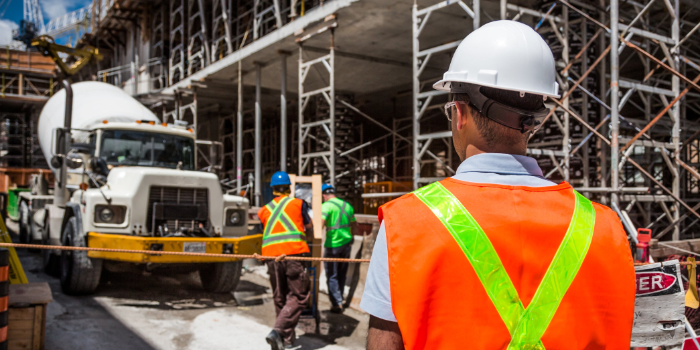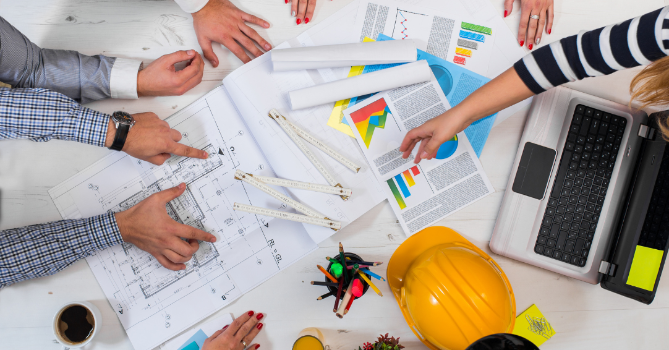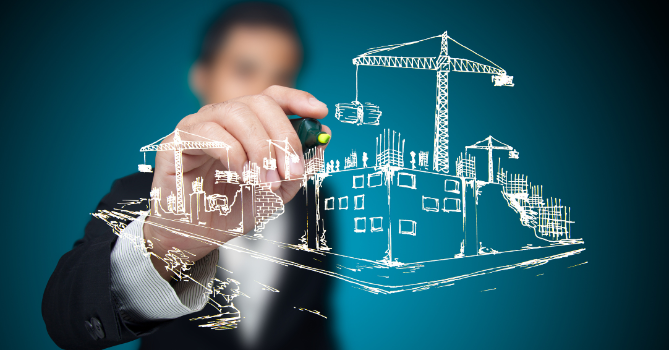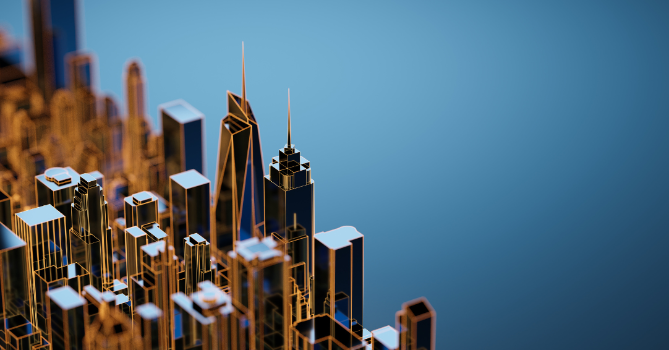
How AI is Shaping the Future of Heavy Construction
Artificial Intelligence (AI) is revolutionizing the heavy construction industry. It’s no longer an emerging technology, but a game-changer. AI is driving efficiency by automating repetitive tasks, reducing manual labor, and minimizing delays. It helps increase productivity through predictive analytics, allowing teams to foresee issues and adjust plans early on. This proactive approach cuts down on wasted time and resources. AI also plays a crucial role in safety management by analyzing site data in real time to identify hazards and prevent accidents before they happen. With automation and smart tools, AI enables better control over complex projects, ensuring that work gets done on time and within budget. From cost savings to improved safety, AI is making construction smarter and more sustainable. These advancements set the stage for a deeper look into how AI continues to shape the future of heavy construction.
AI in Construction Planning and Design
AI is transforming how projects are planned and designed in heavy construction. Traditional planning methods often relied on guesswork and outdated data. Now, AI tools use predictive analytics to optimize schedules and predict project timelines more accurately. For example, machine learning algorithms analyze historical project data to identify potential bottlenecks before they occur. This helps teams allocate resources more effectively and avoid costly delays.
AI also assists in the design phase by creating data-driven models. These models consider various scenarios, such as weather conditions and material availability, to recommend the most efficient project path. With AI, design changes can be tested in a virtual environment before implementation, reducing errors and rework. Additionally, AI-driven simulations allow architects and engineers to see the impact of changes in real time, making the design process more fluid and responsive.
By integrating AI into planning and design, construction companies can make more informed decisions. They can also set realistic timelines and budgets, ensuring projects are completed on time and within scope. This level of precision was previously unattainable, but AI makes it possible, helping teams deliver high-quality projects with fewer setbacks and unexpected costs.
AI-Powered Construction Management
AI is changing the way construction management works. With AI-powered tools, managers can track projects in real time. This gives them a clear view of progress, helping them identify delays or issues right away. AI tools can also automate reports, saving time on paperwork and letting managers focus on bigger tasks.
Risk management is another area where AI shines. AI software can analyze data to detect potential risks, such as weather changes or material shortages, before they impact the project. This allows teams to adjust their plans and avoid costly setbacks. AI also plays a key role in supply chain management by forecasting demand and ensuring materials arrive on time.
When it comes to equipment, AI helps monitor machinery performance. It can predict when a machine might need maintenance, which helps prevent unexpected breakdowns. This reduces downtime and keeps projects moving smoothly. Predictive maintenance, powered by AI, means repairs are done before issues become serious, saving both time and money.
Overall, AI empowers construction managers to make smarter decisions. With accurate data at their fingertips, they can ensure projects stay on schedule, within budget, and with minimal disruptions.
Enhancing On-Site Construction Activities
AI is bringing big changes to on-site construction activities. One of the biggest shifts is the use of robotics and automated machinery. Robots can handle repetitive tasks like bricklaying, concrete pouring, or even welding. This speeds up work, reduces human error, and allows skilled workers to focus on more complex tasks. Automated machinery also works consistently, improving the overall quality of the build.
Safety management is another area where AI makes a huge difference. AI systems can monitor the site in real time, using cameras and sensors to spot potential hazards like unsafe scaffolding or areas with heavy equipment traffic. If a risk is detected, the system sends alerts to supervisors and workers, helping prevent accidents before they happen.
AI also enhances safety training through virtual reality (VR) simulations. Workers can experience realistic job site scenarios and learn how to handle dangerous situations without facing real-world risks. This helps improve awareness and reduces accidents on site.
By combining robotics and AI-driven safety tools, construction sites are becoming safer and more efficient. This technology not only protects workers but also keeps projects on track by minimizing injuries and ensuring smooth, uninterrupted operations.
Quality Control and Compliance
AI-driven quality control systems are transforming the way construction sites maintain standards and ensure compliance. Traditional inspections rely on manual checks, which can be time-consuming and prone to human error. AI-powered inspection tools, like drones equipped with cameras and sensors, can quickly scan large areas to detect defects in real time. These tools can identify issues such as cracks, misalignments, or uneven surfaces with high precision.
Once a defect is spotted, the AI system can recommend corrective actions. This process not only speeds up quality control but also reduces the need for rework, saving both time and money. Additionally, AI tools ensure that all construction activities meet industry standards and regulations, minimizing the risk of compliance issues.
By integrating AI into quality control, construction companies can deliver higher-quality projects. The result is a final product that meets or exceeds client expectations, without costly delays or unexpected problems.
Addressing Challenges in AI Adoption
Adopting AI in construction isn’t without its challenges. Many workers may lack the digital skills needed to operate AI tools effectively. There’s also the issue of cost—AI technology can be expensive to implement and maintain. Ethical concerns, like job displacement, arise as well, with fears that automation could replace human workers.
One solution is investing in training programs. These can help workers build the digital skills required to work alongside AI, making them more valuable in the job market. Additionally, companies can focus on creating new roles that complement AI adoption, such as data analysts or AI system operators. These positions allow workers to leverage AI without losing employment opportunities.
Lastly, firms can explore phased AI implementation. This approach reduces initial costs and allows for smoother transitions, ensuring that workers, management, and clients adapt to the new technology comfortably.
The Future of AI in Heavy Construction
The future of AI in heavy construction is full of exciting possibilities. We can expect to see even more advanced robotics handling complex tasks like laying foundations or erecting steel frameworks. AI could also drive sustainable building practices by optimizing energy use and reducing waste during construction. For example, AI can analyze materials to find the most eco-friendly options or create designs that use resources more efficiently.
Early adoption of these technologies will be crucial for companies looking to stay competitive. Those who embrace AI now will be better positioned to lead the industry as it evolves. They’ll benefit from faster project completion times, improved safety, and lower costs.
As AI continues to grow, it’s not just about keeping up—it’s about setting the pace. By leveraging AI’s full potential, the heavy construction industry can move towards a more innovative, efficient, and sustainable future.
Conclusion
AI is transforming the heavy construction industry by enhancing planning, management, on-site activities, and quality control. Its ability to predict issues, optimize resources, and improve safety is making construction more efficient and cost-effective. While challenges like cost and digital literacy exist, solutions such as training programs can help overcome them. The future of AI promises even more advancements, from smarter robotics to sustainable building practices. Construction firms that embrace AI today will lead the way tomorrow, creating a safer, more productive, and profitable industry. Now is the time to adopt AI and drive future innovation.


